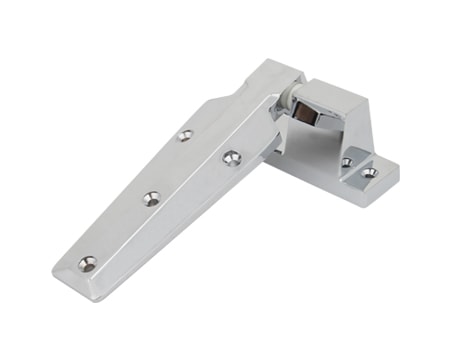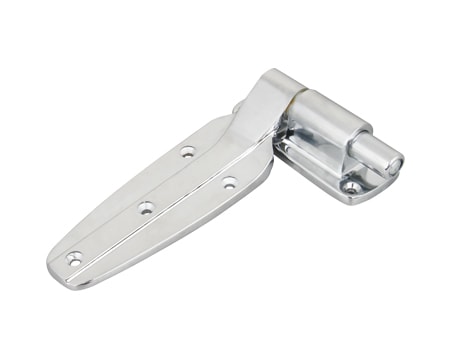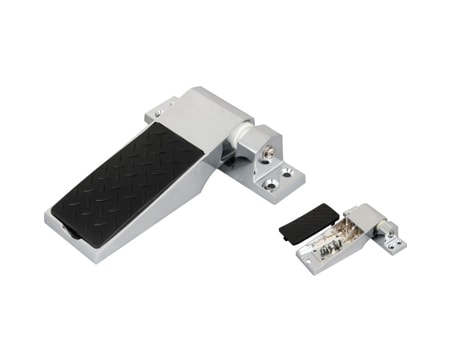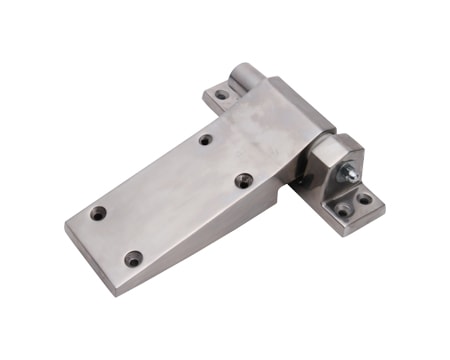In the intricate world of industrial manufacturing, every component matters, no matter how minute or seemingly inconsequential. As production processes evolve and become more refined, the hinges that are used in many of these appliances, especially refrigerators, have gained significant attention. Why are refrigerator hinges so important, and how have they influenced the design and efficiency of modern refrigeration?
Refrigerator hinges are specially designed components that attach the refrigerator door to the main body, allowing it to open and close seamlessly. They play a pivotal role in ensuring the door seals correctly, thus maintaining the interior temperature and ensuring energy efficiency.
To truly grasp the importance of refrigerator hinges, especially in the industrial manufacturing sector, it’s crucial to understand their types, applications, and unique features. Let’s dive deeper.

What are refrigerator hinges?
Refrigerator hinges, often overlooked, play a quintessential role in the functioning of the appliance. These components, while small, are responsible for holding the weight of the door and ensuring its smooth movement.
In the industrial manufacturing sector, these hinges need to be exceptionally durable and well-designed. Given the scale at which refrigerators are produced, any small inefficiency can lead to significant losses, both in terms of energy and financial resources. Therefore, choosing the right hinge type and ensuring its optimal performance is paramount.
What are the different types of refrigerator door hinges?
Refrigerator hinges come in a variety of types, each designed to cater to specific models and door styles.
The most common are pivot hinges, used mainly in single-door refrigerators. They are placed at the top and bottom of the door, allowing it to swing open and close. Another type is the continuous hinge, which runs the entire length of the door, providing increased stability and support, especially for heavier doors.
Bracket-type hinges are commonly found in double-door refrigerators. These allow the doors to be opened in tandem or individually, depending on the need. Understanding the distinctions between these types is essential for manufacturers to ensure the right fit and optimal performance. For specific products click here.

Can you change the hinges on the fridge door?
Replacing or changing refrigerator hinges is a question that many in the manufacturing sector grapple with, especially when considering refurbishment or upgrades.
Yes, in most cases, refrigerator hinges can be replaced or changed. However, it requires a clear understanding of the refrigerator model and the compatibility of the hinge type. For manufacturers, having a standardized design can simplify this process.
It’s also essential to ensure that the new hinge can support the door’s weight and offer the same, if not better, performance. Proper installation is crucial to prevent any air leaks or inefficiencies in sealing.
Why are most fridges right-hinged?
The orientation of refrigerator hinges, especially the dominance of right-hinged designs, is both a matter of tradition and ergonomics.
Historically, many appliances and doors were designed for right-handed users, given that a significant majority of the global population is right-handed. This made the opening and closing process more intuitive and ergonomic.
In industrial manufacturing, standardization plays a vital role. Having a predominant design orientation, like right-hinged refrigerators, simplifies production processes, reduces errors, and ensures consistency in the final product.

Are all fridges right hinged?
While a majority of refrigerators are right-hinged, they are by no means the only option available.
Left-hinged refrigerators, although less common, are also produced to cater to specific market segments or design requirements. Some modern refrigerator models even offer reversible doors, allowing users or manufacturers to switch the hinge orientation as needed.
For industrial manufacturers, offering such flexibility can be a unique selling proposition, catering to a wider audience and ensuring that design or spatial constraints of users are addressed.
What is the difference between sliding and fixed hinges on the fridge?
The hinge mechanism is a critical consideration in refrigerator design, especially when considering the integration of the fridge with cabinetry or other structures.
Sliding hinges allow the refrigerator door to slide on a rail, ensuring that it doesn’t protrude when opened. This is especially valuable in tight spaces or when the appliance is integrated into cabinetry. Fixed hinges, on the other hand, keep the door stationary in relation to the fridge body.
From an industrial manufacturing perspective, the choice between sliding and fixed hinges depends on the target market, design aesthetics, and functionality requirements. Both have their merits, and the decision often boils down to the specific use-case scenario.

Conclusion
Refrigerator hinges, while seemingly simple, play a crucial role in the design, functionality, and efficiency of the appliance. For those in the industrial manufacturing sector, understanding the nuances of these hinges can lead to better product designs, enhanced user satisfaction, and, ultimately, a more successful product in the market.
You might also be interested:




